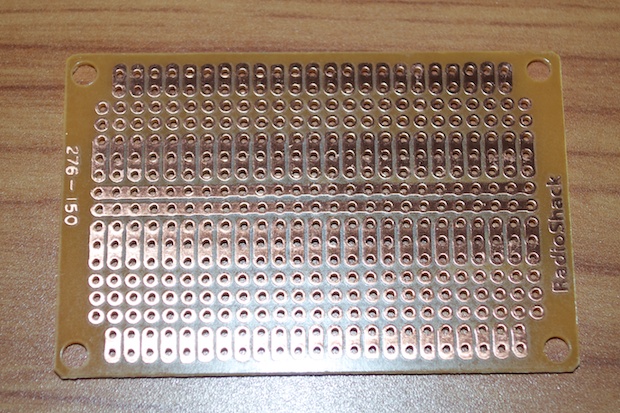
Playing around with the
FartBox, I started to wonder how Staples got their “Easy” button to run off 2xAAA batteries. How did they make it so much louder that my FartBox? What makes it tick?
Let’s take it apart.
Peel away the rubber feet.

Take out the 4 screws.

Remove the top cover.

That’s it. That’s all it is. A little chip under a black blob, a switch, and a few caps.

If you lift up the board, there’s a metal plate underneath. I don’t know what purpose it serves since it’s not connected or grounded to anything. I wonder if it’s some sort of EMI shield for the speaker. I didn’t think you’d need one here. Actually, when was the last time you saw a speaker shielded on any battery operated device? I thought maybe it was to provide some kind of click sound, action, or feedback when you press the button, but looking at the mechanics, nothing comes in contact with it when you press the button. The unit sounds exactly the same with or without it; so the plate doesn’t provide any kind of acoustical properties. I wonder if it serves any purpose at all considering the circuit runs fine without it. But enough about the metal plate. Take it out.

Remove 4 more screws and take out the plastic tray exposing the speaker and some chunks of metal.

Those metal rods serve absolutely no other purpose that to provide a counterweight to the off-centered batteries. Along with the metal plate, they’re not connected to anything.

Lastly, a very thin no-frills speaker.

I don’t know if I can squeeze my FartBox circuit into this. Maybe I can run it off a few CR2032 batteries. Three of them would give me 4.5 Volts and would power the ATmega and the op amp. I might just be able to jam them into the battery well if I Dremel it out and solder the batteries together.
It then becomes a question of fitting the components on a board small enough to squeeze into the enclosure. I dug through my parts and found a few contenders. These RadioShack boards are pretty big at 2” x 3” but I might be able to cut them down.

I also have a few of these tiny 1.75” x 1.75” boards that do offer just enough real estate to pull it off, although it’s pretty tight. I’m sure the rats nest of wires that would result would probably inhibit a good fit in the enclosure.

It’s starting to look more like I’m going to have to have a board made up. Using OSH Park, I’d get 3 boards. Having a few extras would come in handy. I could still go ahead and make a FartBox as well as stick a board in the Easy button to make it say something totally different; like “This is bullshit!” That would be great at work. I’d also have a leftover board for a future project.
I threw together a board in Eagle using the FartBox schematic. I know the relay is way bigger than it needs to be, but I have a ton of them. I figured I’d save myself a few bucks and just use the ones I have on hand.

I then printed it out to see how small it was and if it’ll fit in the Easy button enclosure.

Looks like it’ll work. I would probably just have to Dremel out some of the excess plastic to accommodate some of the added height from the components.
I suppose I could go all out and make it with some SMD parts, but this seems to do the trick. All I’d have to do is run wires to the button, speaker, and batteries.
I uploaded the board to OSH Park just to get an idea of the price. Looks like 3 boards will only run me $13.40. That’s only $4.47 a board. That’s a pretty good deal.

I made them as small as I could. I just hope the component placement doesn’t cause any weird feedback. I also changed the name to SoundBox to make it more generic so that I can use the other two boards for other audio projects that don’t fart.

I laid the parts on the printout to see how they look. That should just about do it.

While I’m waiting for those boards to come in, I can go ahead and move forward with the next project.
See this project from start to finish: The FartBox Staples Easy Button
SoundBox PCB SoundBox Boards Are a Bust! Completed the SoundBox
















